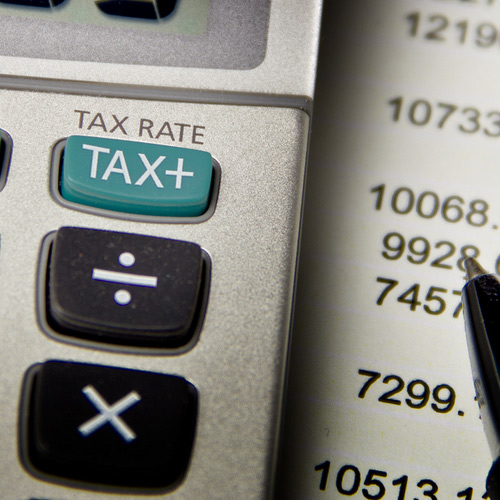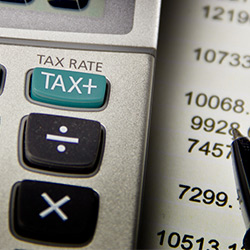Budget 2025: How the 2p Tax Rise on Property, Savings and Dividends Hits Your Wallet
Budget 2025 has now confirmed a major shift in how income from assets is taxed in the UK. The government is increasing the tax rates on property income, savings interest and dividends by 2 percentage points in most bands, with brand‑new, separate rates for property income from April 2027. Immediately see the impact using our interactive 2p tax rise calculator below.
Quick overview: the key tax rate changes
-
Dividend income (from April 2026)
The government will increase dividend tax by 2 percentage points in the basic and higher bands:- Ordinary rate: rises from 8.75% to 10.75%
- Upper rate: rises from 33.75% to 35.75%
- Additional rate: remains at 39.35% (unchanged)
-
Savings interest (from April 2027)
Income tax on savings interest will increase by 2 percentage points across all main income tax bands:- Basic rate savings tax: 20% → 22%
- Higher rate savings tax: 40% → 42%
- Additional rate savings tax: 45% → 47%
-
Property income – new separate property tax bands (from April 2027)
For the first time, landlord income will be taxed using distinct “property” income tax rates:- Property basic rate: 22%
- Property higher rate: 42%
- Property additional rate: 47%
Existing landlord reliefs still apply:- £1,000 property allowance for small landlords
- Rent a Room Scheme – up to £7,500 a year tax‑free (£3,750 for joint landlords)
-
No change to employment and self‑employment tax rates
The Budget does not change the main income tax or National Insurance rates on employment or self‑employment income, but:- Income tax and NI thresholds remain frozen until 2030–31, which acts as a “stealth tax” as more people are dragged into higher bands (Guardian, Yahoo Finance).
-
New ordering of reliefs and allowances (from April 2027)
The ordering rules for income tax will change so that your Personal Allowance is used first against employment, trading or pension income, and only then against property, savings and dividends. Specific structural allowances (dividend allowance, personal savings allowance, property allowance) keep their existing priority.
Who will actually pay more because of the 2p tax rise?
-
Landlords with taxable rental profits
If you have rental profits above the property allowance/Rent a Room threshold, your marginal rate will rise:- From 20% to 22% if you are a basic‑rate taxpayer
- From 40% to 42% if you are in the higher‑rate band
- From 45% to 47% for additional‑rate landlords
-
Savers with significant interest outside ISAs
Most people will still pay no savings tax – HMRC expects over 90% to remain unaffected – but higher‑rate and additional‑rate savers with large cash balances outside ISAs will see a 2% increase in the tax they pay on interest above the allowances. -
Investors and company owners taking dividends
The 2p rise on dividends (plus any changes already made to the dividend allowance in recent years) will matter most for:- Directors paying themselves with a small salary and a large dividend
- Investors with sizeable portfolios held outside ISAs and pensions
-
Pensioners with taxable investment income
Pensioners’ state and private pension income is not directly affected by the 2p rises. However, those with taxable savings interest, dividends or rental profits on top of their pension will see higher tax bills in those categories – again, only above their allowances and outside tax‑advantaged wrappers like ISAs and SIPPs.
Why the government says it is doing this
- HM Treasury argues that income from assets is currently under‑taxed compared to earnings because it does not attract National Insurance.
- The official guidance gives an example of a landlord and a tenant both earning £25,000 – the landlord currently pays nearly £1,200 less in tax because there is no NI on property, savings or dividend income. The 2p rise is meant to narrow this gap.
- The Budget documents and OBR forecasts (as summarised by the BBC and This is Money) show the package of tax rises on property, savings and dividends is a significant revenue‑raiser, contributing several billion pounds a year towards closing the fiscal hole.
Use our 2p tax rise calculator to see your personal impact
To help you quantify the effect of these changes, we’ve built a dedicated 2p tax rise on property, savings and dividends calculator. It models:
- Your total income from:
- PAYE employment
- Self‑employment
- Property rental profits (flagged clearly as rising by 2%)
- Dividend income (flagged as rising by 2%)
- Savings income (flagged as rising by 2%)
- Pension income
- Capital gains, redundancy payments and more
- Student loan plan type and balance
- Annual pension contributions and whether they are via an employer scheme or a private plan
Examples: how much more tax could you pay?
Here are some simplified example scenarios the calculator is designed to handle:
-
Example 1 – basic‑rate landlord with rental profits
Suppose you:- Earn £28,000 from employment
- Have £8,000 net rental profit after expenses
-
Example 2 – higher‑rate investor with dividends
You earn:- £60,000 salary
- £10,000 in dividends outside an ISA
-
Example 3 – saver with large cash holdings
A higher‑rate taxpayer with substantial savings interest above the Personal Savings Allowance will see their tax rate on that interest move from 40% to 42%. If you earn £5,000 of taxable interest above your allowance, that’s about £100 more tax per year.
Planning ahead: how to respond to the new 2p tax rise
These changes don’t kick in all at once, but there is now a clear timetable. You can use the calculator to test different strategies before the rates fully bite:
-
Maximise ISAs and pensions
Because the Budget also caps cash ISA allowances at £12,000 for under‑65s (with the remainder of the £20,000 allowance reserved for stocks and shares), it is more important than ever to:- Use the full ISA allowance each year where possible
- Hold interest‑bearing cash in ISAs if you are close to triggering savings tax
- Hold dividend‑paying assets inside ISAs or pensions where feasible
-
Review your drawdown strategy
If you are already retired and drawing from a mix of pension, cash and investments, the order in which you take income can change how much you pay under the new rules. The calculator allows you to model changes in:- How much you draw as pension income
- How much you take in taxable interest or dividends
- The effect of shifting money into wrappers such as ISAs or SIPPs
-
Landlords: reassess portfolio profitability
Combined with frozen thresholds and tighter landlord rules over the last decade, the 2p rise may make some marginal buy‑to‑let arrangements unviable. Running your figures through the calculator will show whether:- Your net position after tax is still positive
- You are pushed from basic into higher‑rate bands
- A sale, incorporation, or debt reduction strategy might be worth exploring
-
Directors: salary vs dividend mix
Many owner‑managers keep salary low and pay themselves primarily via dividends to minimise NI. With dividend tax now higher, and income tax thresholds frozen, it is worth:- Re‑evaluating the optimal salary/dividend split
- Comparing outcomes if more income is taken as salary, especially if it remains in lower bands
If you want a deeper dive into the wider Budget, including leaks and early speculation before the final package was announced, see:
- Our analysis of early Budget rumours and tax rise expectations in Budget 2025 leaks – early rumours of tax rises .
- Our detailed look at how potential changes to dividend tax would affect small business owners and investors in dividend tax changes calculator for Budget 2025 .
- Our earlier prediction piece, Autumn Budget 2025 predictions , where we highlighted the growing pressure to align taxation of work and wealth.
- For those affected by the new £2,000 cap on salary sacrifice into pensions, see our companion guide and tool: salary sacrifice pension cap calculator .
- New mileage‑based tax on EVs and plug‑in hybrids from 2028, partly replacing lost fuel duty revenues: electric vehicle road charging calculator .



